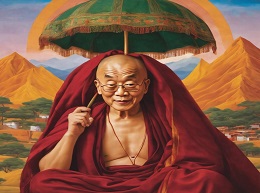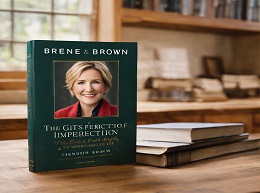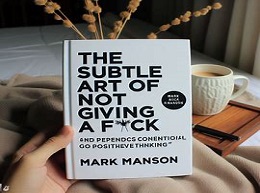The Art of Happiness

"The Art of Happiness" is a book co-authored by the Dalai Lama (Tenzin Gyatso) and Howard Cutler. First published in 1998, the book explores the concept of happiness and provides insights into achieving a meaningful and fulfilling life. The book is based on a series of conversations between the Dalai Lama and Howard Cutler, who is a psychiatrist. Here's a summary:
Key Themes:
-
Definition of Happiness:
- The book begins by examining the concept of happiness and its different forms, distinguishing between fleeting pleasures and lasting, deeper contentment.
-
The Role of the Mind:
- The Dalai Lama and Cutler discuss the power of the mind in shaping one's perception of reality and the importance of cultivating a positive mental attitude.
-
Dealing with Adversity:
- The authors explore the ways in which individuals can cope with and find meaning in adversity, emphasizing the role of resilience and mental strength.
-
Compassion and Altruism:
- Compassion and altruism are highlighted as essential components of genuine happiness. The Dalai Lama shares insights from Buddhist philosophy on the benefits of cultivating compassion for oneself and others.
-
The Pursuit of Inner Peace:
- Inner peace is presented as a foundational element of happiness. The authors discuss methods for finding tranquility and contentment within oneself.
Key Concepts:
-
The Four Noble Truths:
- The book touches upon the Buddhist concept of the Four Noble Truths, which identify the nature of suffering, its causes, its cessation, and the path to its cessation.
-
Mindfulness and Meditation:
- The practice of mindfulness and meditation is explored as a means of cultivating a calm and focused mind, reducing stress, and fostering a sense of well-being.
-
Interconnectedness:
- The concept of interconnectedness is discussed, emphasizing the idea that individual happiness is linked to the well-being of others and the broader community.
-
Balancing Materialism:
- The authors address the challenges posed by materialism and the pursuit of external success, suggesting that true happiness arises from a balance between material and spiritual well-being.
Impact:
-
International Bestseller:
- "The Art of Happiness" became an international bestseller, reaching a wide audience and resonating with readers from various cultural backgrounds.
-
Cross-Cultural Appeal:
- The collaboration between the Dalai Lama and Howard Cutler has contributed to the book's cross-cultural appeal, making it accessible to readers regardless of their religious or philosophical background.
-
Influence on Positive Psychology:
- The book has had an impact on the field of positive psychology, influencing discussions on the factors that contribute to a fulfilling and meaningful life.
-
Integration into Self-Help Literature:
- The principles presented in the book have been integrated into self-help literature, with many readers finding practical guidance for improving their well-being.
Practical Application:
-
Mindfulness Exercises:
- The book includes practical exercises and suggestions for incorporating mindfulness into daily life, offering readers tools to enhance their mental well-being.
-
Reflection and Journaling:
- The authors encourage reflection and journaling as a means of gaining self-awareness and deepening one's understanding of the sources of happiness.
-
Compassion Practices:
- Compassion practices are discussed, providing readers with insights into how cultivating compassion can positively impact their own happiness and the well-being of others.
-
Mind-Training Techniques:
- The Dalai Lama shares mind-training techniques from the Tibetan Buddhist tradition, offering readers a pathway to develop a more positive and compassionate mindset.
"The Art of Happiness" combines the wisdom of the Dalai Lama with insights from psychiatry, providing a holistic approach to understanding and cultivating happiness. The book remains a widely read and influential resource for individuals seeking guidance on the journey to a more fulfilling and contented life.












